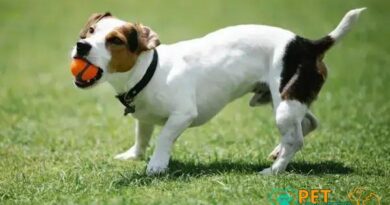What is Whelp
What is Whelp?
The term “whelp” refers to the process of giving birth in dogs, specifically the act of a female dog delivering her puppies. This term is commonly used in the canine breeding community and is essential for understanding the reproductive cycle of dogs. Whelping is a significant event that requires proper preparation and knowledge to ensure the health and safety of both the mother and her puppies.
Understanding the Whelping Process
Whelping typically occurs after a gestation period of about 63 days, although this can vary slightly depending on the breed and individual dog. During this time, the female dog undergoes various physical and hormonal changes that prepare her body for the delivery of her puppies. Recognizing the signs of impending whelping is crucial for dog owners, as it allows them to provide the necessary support and care during this critical time.
Signs of Approaching Whelping
As the whelping date approaches, a female dog may exhibit several signs that indicate she is ready to give birth. These signs include nesting behavior, increased restlessness, loss of appetite, and a drop in body temperature. Understanding these signs can help dog owners prepare for the arrival of the puppies and ensure a smooth whelping process.
Preparing for Whelping
Preparation is key when it comes to whelping. Dog owners should create a comfortable and safe whelping area for the mother dog, often referred to as a whelping box. This area should be clean, quiet, and free from distractions, allowing the mother to focus on the birthing process. Additionally, having essential supplies on hand, such as clean towels, heating pads, and a veterinary contact number, can make a significant difference during whelping.
The Whelping Process
The actual whelping process can vary in duration and complexity. It typically involves three stages: the first stage is the onset of contractions, the second stage is the delivery of the puppies, and the third stage is the expulsion of the placenta. Each puppy is usually born within 30 to 60 minutes of each other, but this can vary. Monitoring the mother during this time is essential to ensure she is coping well and that the puppies are being delivered safely.
Post-Whelping Care
After the whelping process is complete, the focus shifts to post-whelping care. The mother dog will need to be monitored closely to ensure she is recovering well and that all puppies are nursing properly. Providing a nutritious diet and plenty of water is crucial for the mother’s recovery and milk production. Additionally, keeping the whelping area clean and comfortable will help promote the health of both the mother and her puppies.
Common Whelping Complications
While many dogs whelp without complications, some may experience issues that require veterinary intervention. Common complications include dystocia (difficult labor), retained placentas, or infections. Being aware of these potential problems and having a veterinarian’s contact information readily available can help ensure that any issues are addressed promptly, safeguarding the health of the mother and her puppies.
The Importance of Whelping Knowledge
Understanding the whelping process is vital for any dog owner, especially those involved in breeding. Knowledge about what to expect during whelping can help reduce anxiety and ensure that both the mother and her puppies receive the best possible care. Additionally, educating oneself about the signs of complications can lead to timely veterinary care, ultimately improving outcomes for both the mother and her litter.
Whelping and Puppy Development
Whelping is just the beginning of a puppy’s journey. After birth, puppies undergo rapid development, requiring constant care and attention. Understanding the early stages of puppy development, including socialization and health checks, is essential for new dog owners. This knowledge helps ensure that puppies grow into healthy, well-adjusted adult dogs, ready to thrive in their new homes.




